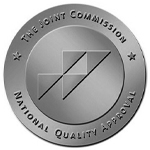
Foot and ankle pain can greatly affect a person’s quality of life. Everyday activities which should be enjoyable, such as taking a walk, can become painful experiences to avoid. Dr. David Pagnanelli Jr., a podiatrist and surgeon at Keystone Foot And Ankle Center, enjoys helping his patients get back to pain-free mobility. He commonly treats toe deformities including hammer toes, mallet toes and claw toes, and he discusses this topic in today’s article.
What are hammertoes, mallet toes and claw toes?
A hammer toe is the contracture or bending of the middle joint of your toe. A mallet toe is the contracture or bending of the joint closest to the tip of the toe. A claw toe is the bending upwards of the joint at the base of the toe with the middle toe joint bent down.
The most common cause of these toe deformities is a muscle or tendon imbalance. This imbalance results in the mechanical or structural change in the toe over time. Typically, hammertoes are chronic and get worse with time. People of all ages can develop a hammer toe, mallet toe or claw toe. We do see it more in arthritic older patients, but it can develop in the teen years as well.
Can these conditions be prevented?
Good, supportive shoe wear with adequate toe box room can help. Some hammertoes are hereditary and cannot be prevented but can be slowed. Certain types of shoe gear can aggravate these conditions and progress them faster.
What are the symptoms?
People with these toe issues often experience irritation and pain when wearing shoes or walking barefoot on hard surfaces (socks included). They may also notice a painful and irritating buildup of skin (callus or corns) on the toe, between the toes or on the ball of the foot. A callus or corn is your body’s natural reaction to excess pressure or friction. It is a buildup of dead skin cells to protect the tissue beneath that is at risk from the deformity. They may be firm or soft depending on their location, and may become red and swollen and even cause wounds or ulcerations in some patients. Other symptoms include bending of the toe in a non-natural position, wounds or ulcerations on the toe, and inflammation, redness or even a burning sensation when bearing weight. Sometimes patients may even find themselves waking up at night due to the pain and discomfort.
What treatments are used?
We start with weightbearing x-rays so we can see what the toes look like with the tendons firing. We will also inspect your bones, joints and alignments. This will let us determine the best treatment for you and how we can slow down the progressiveness of the deformity.
For treatment, we start with debriding (cutting) any corns and calluses in the office. This is usually a pain-free procedure. We will then add padding to these areas and suggest changes in shoewear, including orthotics to offload and control the muscle/tendon imbalance. Other treatments include injection therapy and strapping or splinting of the toes as well as certain types of crest padding. If needed for acute pain flareups, we will recommend non-steroidal anti-inflammatory drugs.
If these treatment methods don’t work, surgical intervention may be needed. This typically involves straightening and shortening the toe. IV sedation anesthesia is given at the surgical center and this usually involves pins in the toe that are removed painlessly in the office four weeks later. You usually are in a surgical shoe for six weeks in total, but you can walk out of the operating room and during the entire postoperative period.
Why is early treatment important?
These conditions get worse over time, so if we can slow the progression, we can hopefully avoid the need for surgical intervention in the future. By splinting/padding, offloading and redistributing the weight patterns on the bottom of your feet with orthotics, we may be able to avoid any major complications. If you believe you may have a foot or ankle ailment, don’t delay in seeking care. The sooner treatment begins, the better.
For more information about Keystone Foot And Ankle Center, visit https://keystonehealth.org/keystonefootandankle/
This article contains general information only and should not be used as a substitute for professional diagnosis, treatment or care by a qualified health care provider.




